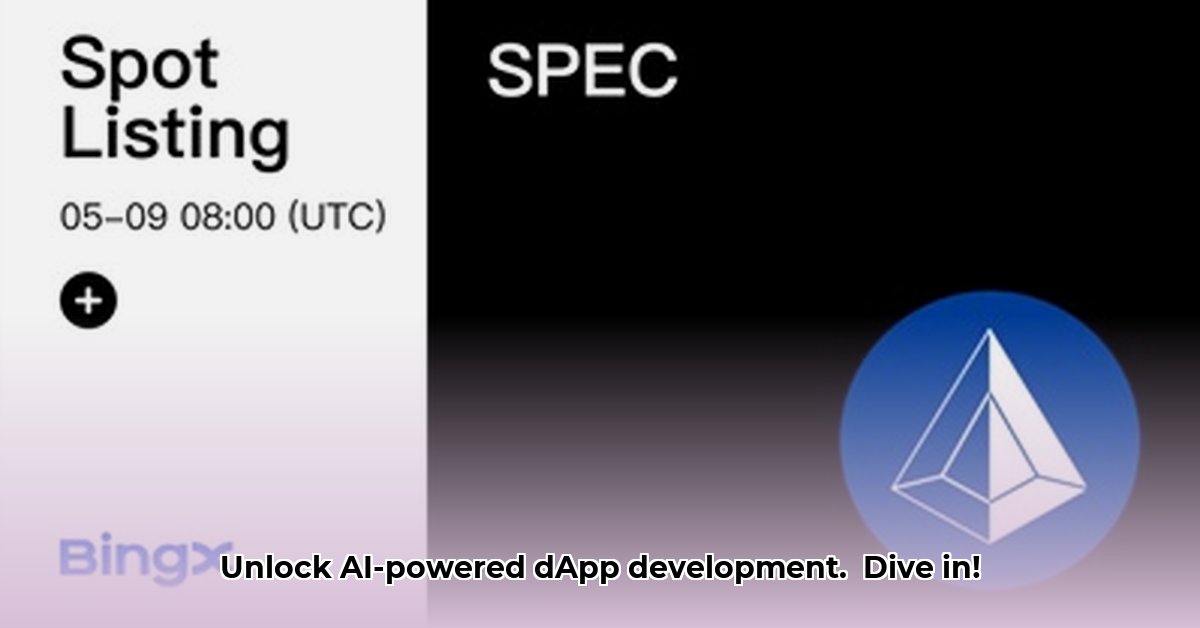
Spectral Token (SPEC): Revolutionizing dApp Creation with AI
Spectral (SPEC) is a novel blockchain protocol aiming to simplify decentralized application (dApp) development using artificial intelligence (AI) and natural language processing (NLP). Instead of wrestling with complex Solidity code, developers can potentially build dApps using plain English instructions. This innovative approach promises to democratize dApp creation, but several key challenges and uncertainties need careful consideration. Does Spectral deliver on its ambitious promises? Let's delve into the details.
Syntax: The AI-Powered Coding Assistant
At the heart of Spectral lies Syntax, an NLP engine that translates user instructions into Solidity code. Imagine describing your dApp's functionality in simple terms, and Syntax automatically generates the necessary smart contracts. This significantly lowers the barrier to entry for dApp development, potentially empowering a wider range of individuals and businesses. However, a critical question remains: How effectively does Syntax handle the complexities of real-world dApp functionality? Thorough testing and real-world deployments will be crucial in validating Syntax's capabilities and identifying limitations. "While the potential is immense, rigorous testing is vital to ascertain its effectiveness in complex scenarios," notes Dr. Anya Sharma, a leading AI researcher at MIT.
Is it realistic to expect Syntax to handle the intricacies of sophisticated DeFi protocols, for example? Only time and extensive testing can provide a definitive answer.
Autonomous On-Chain Agents: Automation and Control
Spectral introduces autonomous on-chain agents, which act as persistent, automated assistants for dApps. These agents manage resources, execute transactions, and interact with other smart contracts based on predefined rules. While this level of automation offers significant advantages, it also raises questions about security and control. How can we ensure the integrity and reliability of these autonomous agents? What safeguards are in place to prevent malicious actions or unintended consequences? This aspect of Spectral requires careful consideration and robust security protocols to inspire trust.
A statement by Professor David Chen, computer science expert at Stanford University sheds some light: "Autonomous agents offer significant potential, but careful design and rigorous security audits are paramount to mitigate risks."
How secure are these agents against potential exploits or vulnerabilities? This is crucial for building user confidence.
Inferchain: Bridging the Blockchain Divide
Spectral's Inferchain protocol tackles the issue of blockchain interoperability. Currently, many blockchains operate in silos; Inferchain aims to create a bridge, enabling seamless communication and data sharing between dApps on different platforms. This interconnectedness could vastly expand the reach and functionality of Spectral-based dApps, fostering collaboration and innovation. However, the efficiency and security of cross-chain communication will be paramount. Potential challenges include transaction speeds and maintaining security across multiple blockchain networks.
Only time will tell how effective Inferchain is in practice, particularly in high-transaction scenarios. Furthermore, the varying security levels of different blockchains pose a challenge.
Spectral Tokenomics: Understanding the SPEC Token
The total supply of SPEC tokens is capped at 14 million. However, the current market capitalization and price are highly volatile, typical of the cryptocurrency market. Investing in SPEC carries considerable risk, as its long-term value is heavily dependent on factors such as community adoption, the success of the Spectral ecosystem, and overall market conditions. Thorough due diligence and an understanding of cryptocurrency market risks are essential before considering any investment.
Do you believe SPEC's tokenomics are sustainable in the long run given the inherent volatility of the crypto market? The answer is complex.
Risk Assessment: A Balanced Perspective
Spectral's development faces several potential challenges. A formal risk assessment matrix reveals key concerns:
| Risk Category | Likelihood | Impact | Mitigation Strategies |
|---|---|---|---|
| Competition | Medium | High | Continuous innovation, focus on unique features and applications |
| Technical Glitches | Low | Medium | Rigorous testing, security audits, and community feedback |
| Regulatory Changes | Medium | High | Proactive engagement with regulators, transparent development |
| Market Volatility | High | Very High | Diversification of investments, risk management strategies |
Regulatory Landscape: Navigating the Legal Terrain
The use of AI by Spectral presents a further layer of complexity, particularly regarding regulatory compliance. The legal framework surrounding AI in decentralized systems is still evolving; data privacy, algorithmic bias, and liability are all significant concerns. Spectral will need to navigate these legal and ethical challenges proactively to ensure long-term success. The implications are vast and require close attention.
What proactive steps is Spectral taking to address potential regulatory roadblocks in different jurisdictions? Transparent engagement with regulators will be key.
The Future of Spectral: Potential and Challenges
Spectral's vision of democratizing dApp development is ambitious. Its success will hinge on various factors, including technology adoption, market competition, and regulatory compliance. While the potential benefits are significant, substantial challenges exist. Continuous monitoring and independent analysis are crucial to understanding Spectral’s evolution and assessing its long-term viability. Is this vision achievable? Only time and further analysis can tell.